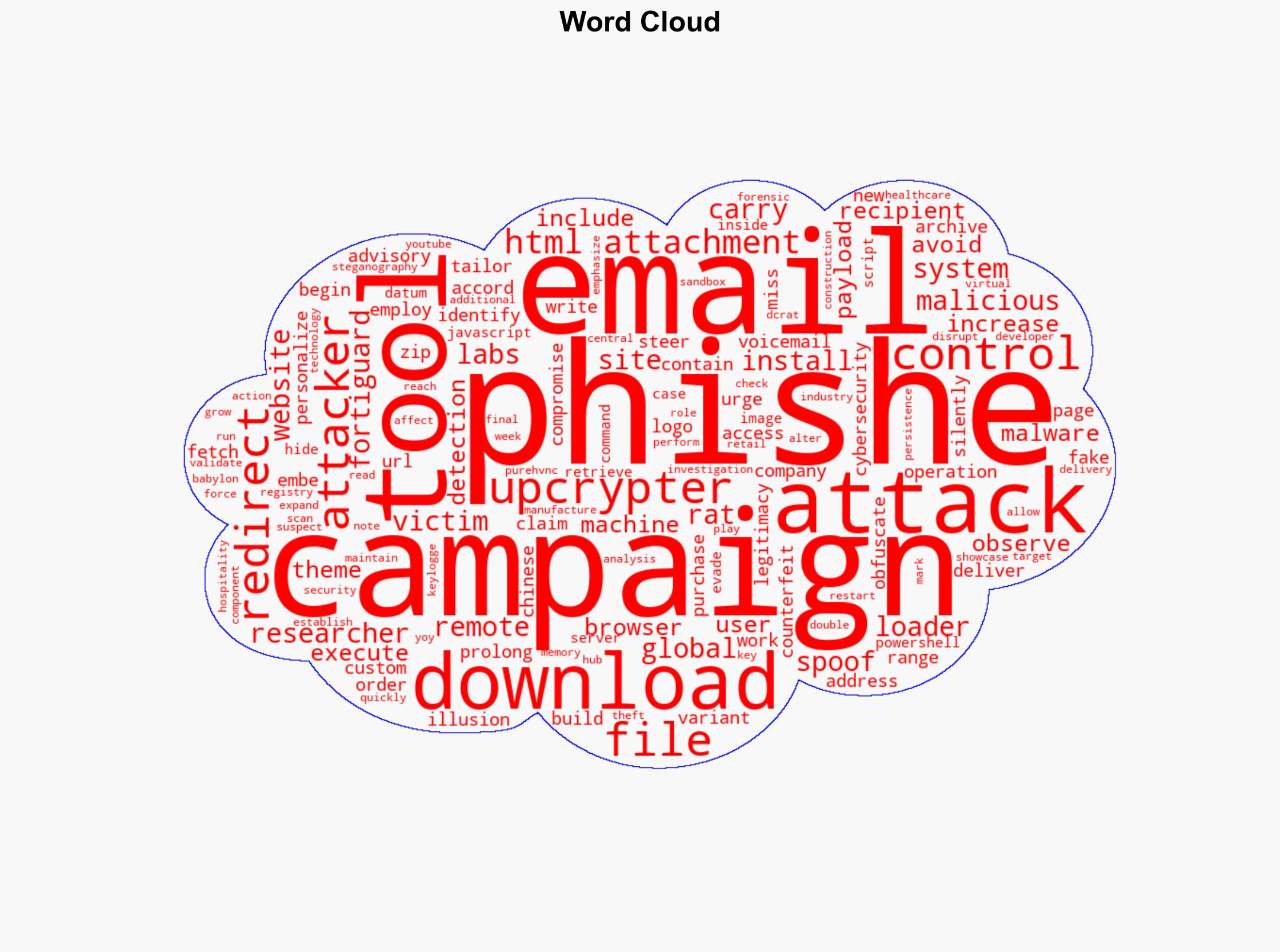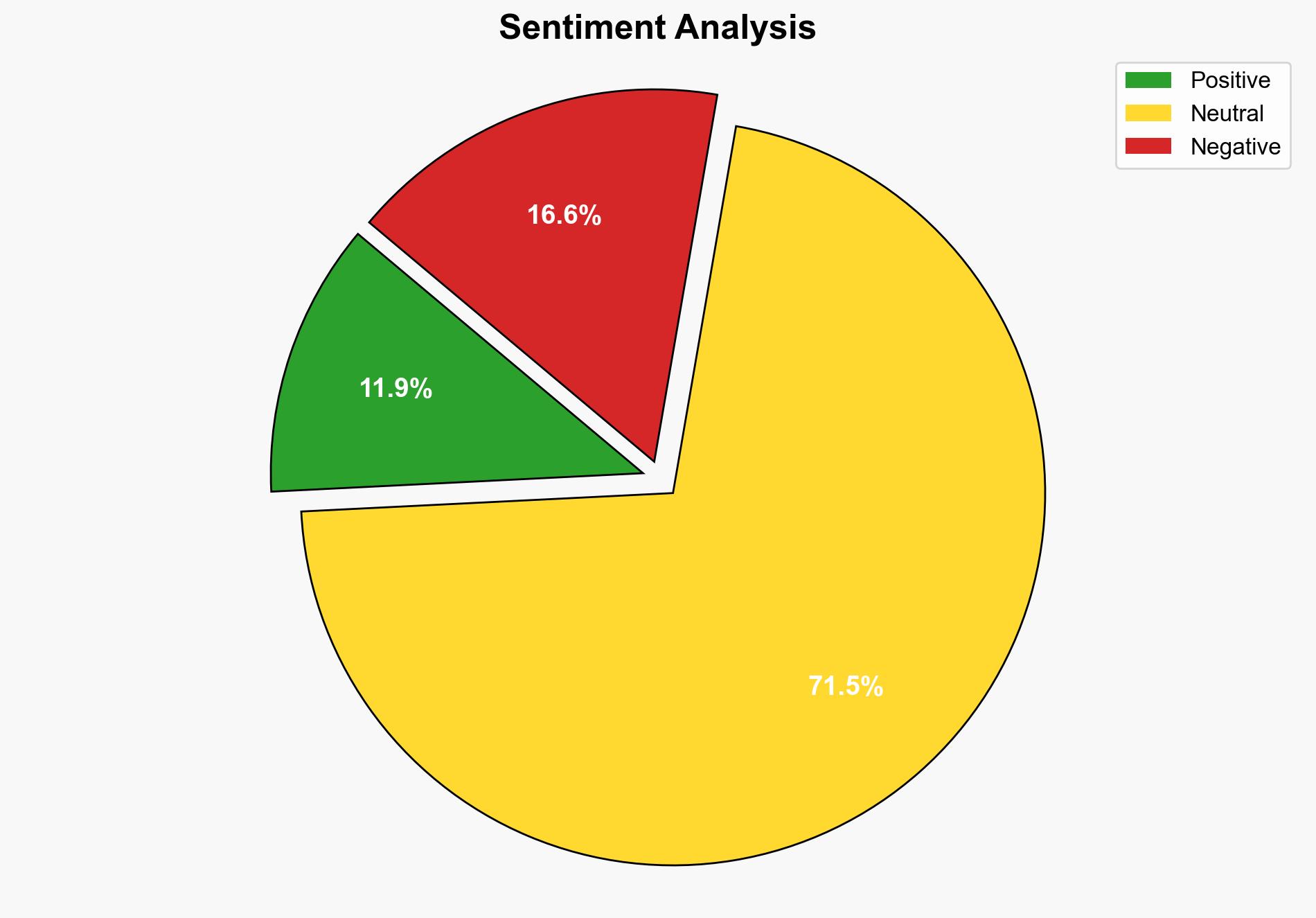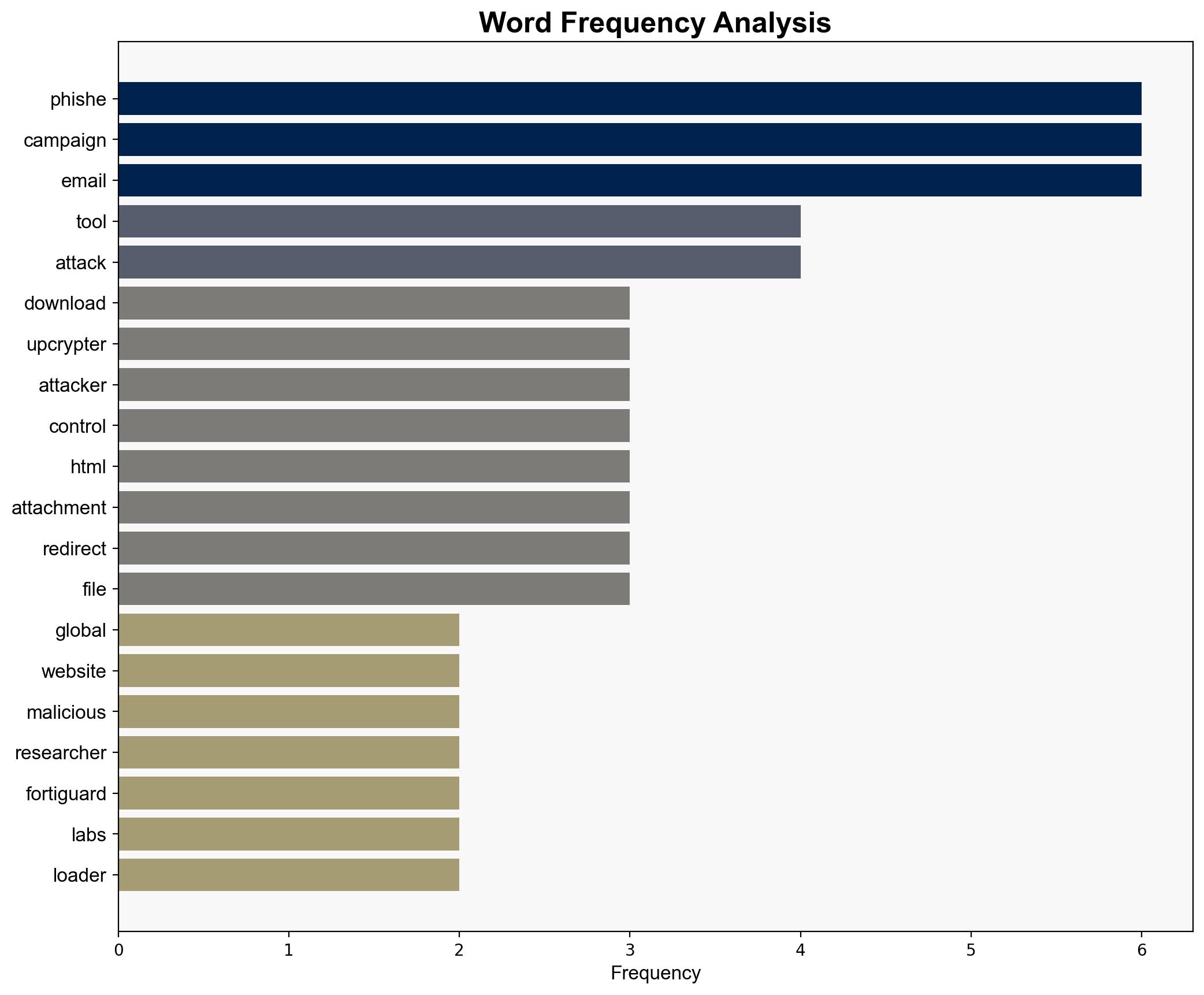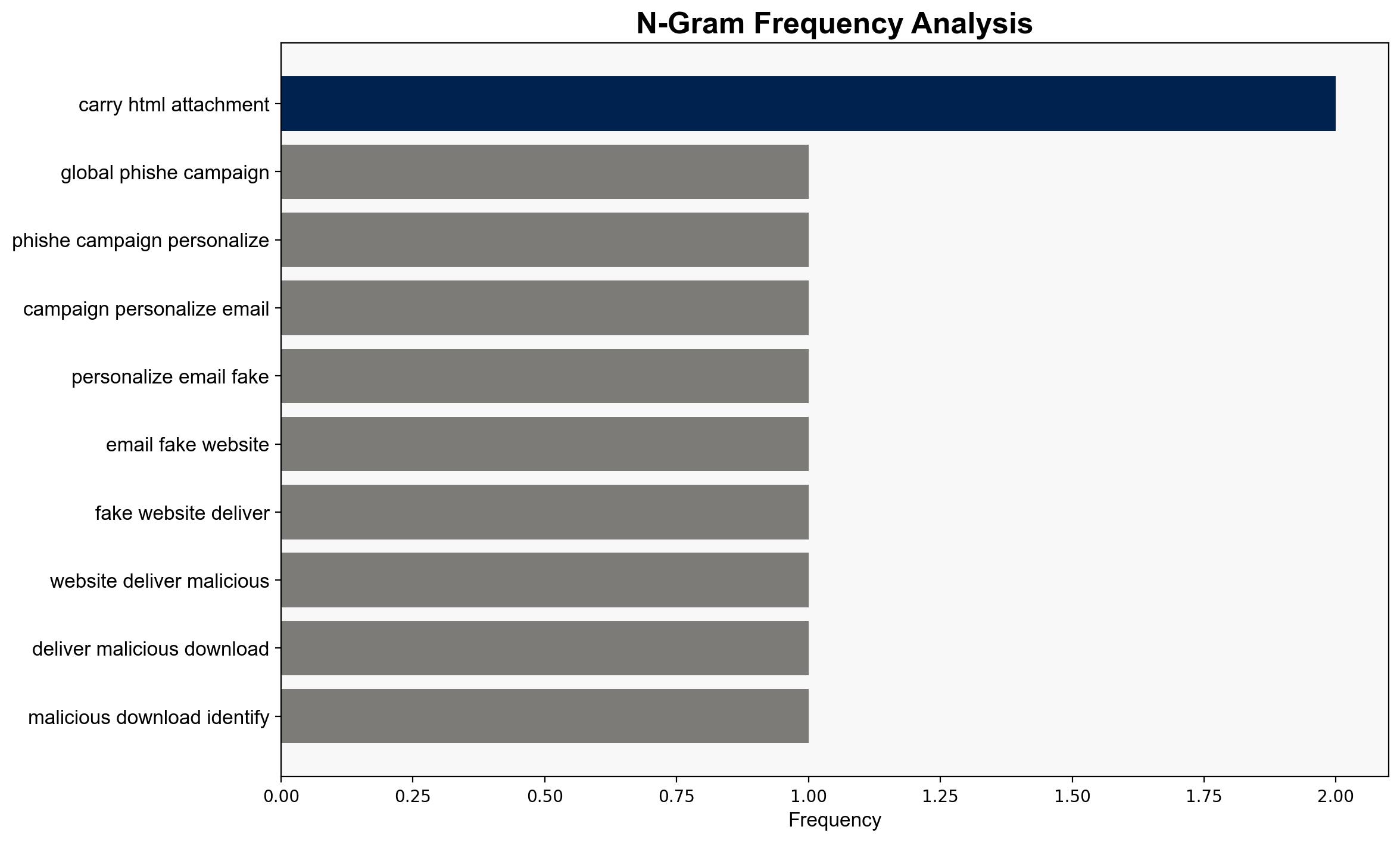Phishing Campaign Uses UpCrypter to Deploy Remote Access Tools – Infosecurity Magazine
Published on: 2025-08-26
Intelligence Report: Phishing Campaign Uses UpCrypter to Deploy Remote Access Tools – Infosecurity Magazine
1. BLUF (Bottom Line Up Front)
The phishing campaign utilizing UpCrypter to deploy remote access tools poses a significant cybersecurity threat with a high confidence level. The most supported hypothesis suggests a coordinated effort by a sophisticated threat actor aiming to compromise corporate environments across multiple industries. It is recommended to enhance email filtering systems and conduct comprehensive staff training to recognize phishing attempts.
2. Competing Hypotheses
1. **Hypothesis A**: The campaign is orchestrated by a state-sponsored actor aiming to gather intelligence and disrupt operations in key industries such as manufacturing, technology, and healthcare.
2. **Hypothesis B**: The campaign is driven by financially motivated cybercriminals seeking to exploit corporate environments for monetary gain through data theft and ransomware deployment.
Using the Analysis of Competing Hypotheses (ACH) 2.0, Hypothesis B is better supported due to the use of common financial cybercrime tools like PureHVNC and DCrat, which are often associated with monetary theft rather than espionage.
3. Key Assumptions and Red Flags
– **Assumptions**: It is assumed that the use of UpCrypter and the observed tools are indicative of financial motives rather than espionage. The assumption that the campaign’s rapid expansion is solely due to its effectiveness could overlook potential collaboration with other threat actors.
– **Red Flags**: The lack of specific attribution to a known threat group raises questions about the origin and ultimate goals of the campaign. The use of steganography to hide data suggests a level of sophistication that may indicate state sponsorship.
4. Implications and Strategic Risks
The campaign’s expansion poses risks of widespread data breaches and operational disruptions, particularly in industries critical to national infrastructure. The use of sophisticated malware could lead to cascading effects, including financial losses and reputational damage. The potential for geopolitical tensions increases if state sponsorship is confirmed.
5. Recommendations and Outlook
- Enhance email filtering and security protocols to detect and block phishing attempts.
- Conduct regular cybersecurity training for employees to recognize phishing tactics.
- Scenario Projections:
- Best Case: Improved defenses lead to a significant reduction in successful phishing attempts.
- Worst Case: The campaign evolves, bypassing current security measures, leading to major breaches.
- Most Likely: Continued attempts with moderate success, prompting ongoing vigilance and adaptation of defenses.
6. Key Individuals and Entities
No specific individuals are identified in the intelligence. Entities involved include FortiGuard Labs and the industries targeted by the campaign.
7. Thematic Tags
national security threats, cybersecurity, counter-terrorism, regional focus




